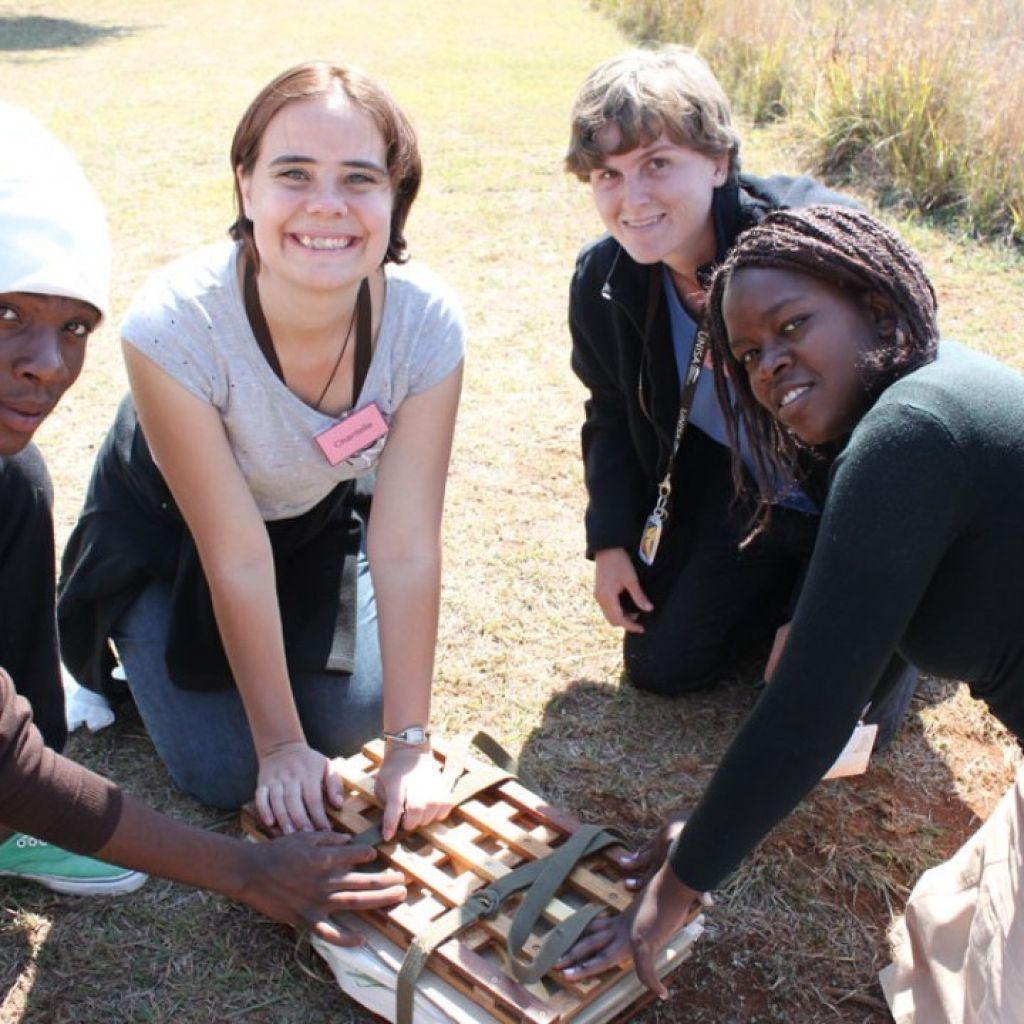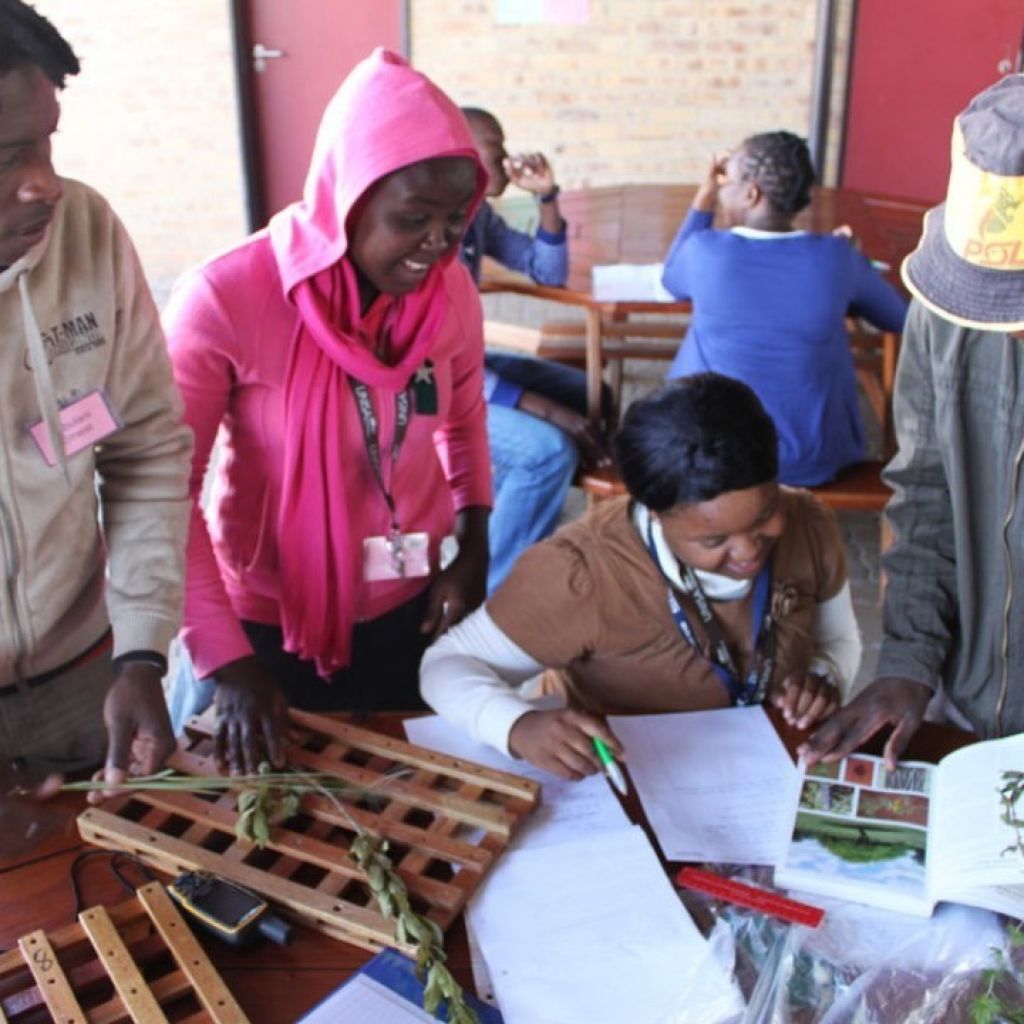UNISA students learn about nature conservation at Maropeng

This week at the Cradle of Humankind, 80 UNISA students are getting hands their hands dirty learning about the natural environment.
Identifying plants, collecting and testing water samples, and studying animal habitats are just a few of the topics the nature conservation first year students will cover during their week-long field training course.
The students come from across the country to gain practical skills, says Su-Mari Swanepoel, junior lecturer: nature conservation, Department of Environmental Sciences.
“As UNISA is a distance learning organisation, there is only so much you can learn from books, so this week gives them an opportunity to gain practical skills to work as guides, environmental educators or researchers,” says Swanepoel.
This is the third year in a row that UNISA has brought students to Maropeng for a field-training course, and they usually visit five times a year. The accommodation facilities at Hominid House are ideal to host such a large group and are conveniently located.
Students are able to visit nearby Mogale’s Gate Environmental Education Reserve, where they collect samples of clean water and study animal habitats. They are also close to the UNISA campus in Pretoria so they can visit the laboratories later in the day.
A first-time visitor to Gauteng, Desiree Chokoe (19) from Polokwane has had a great time meeting so many friendly people. “There is so much to learn about where we come from. The natural environment is incredible. I love the hills and the hues and had no idea there were so many different types of grasses. I’m getting to know a lot more about plants and the environment.”

Students come from across South Africa to participate in the course. This is very useful as they are able to build a group identity, explains Mathilda Brand, senior lecturer: nature conservation, Department of Environmental Sciences. “Students are able to meet other people from the same region, which helps them to go back home and form study groups.”
One of the students, Andre Engelbrecht (22) from the Western Cape, is currently a military practitioner at the air force base in De Hoop Nature Reserve. He has joined the nature conservation course as he wants to work as a conservation officer in the De Hoop reserve, which will involve removing alien plants, checking watering systems and making sure the reserve is not over-populated with animals.
Engelbrecht says the environment in the Cradle is very different to that of the Western Cape and that he’s found the course very interesting so far. “We have been split into smaller groups which is great because we all get an opportunity to get involved and learn the different methods of collecting samples.”
Usually the course runs with about 40 students but this year there has been an increase to 80. Brand believes this is due to a greater awareness of threats to Earth’s sustainability. “With rhino poaching and climate change there is more awareness, and environmental education is also a part of the school curriculum so learners are inspired when they leave school.”